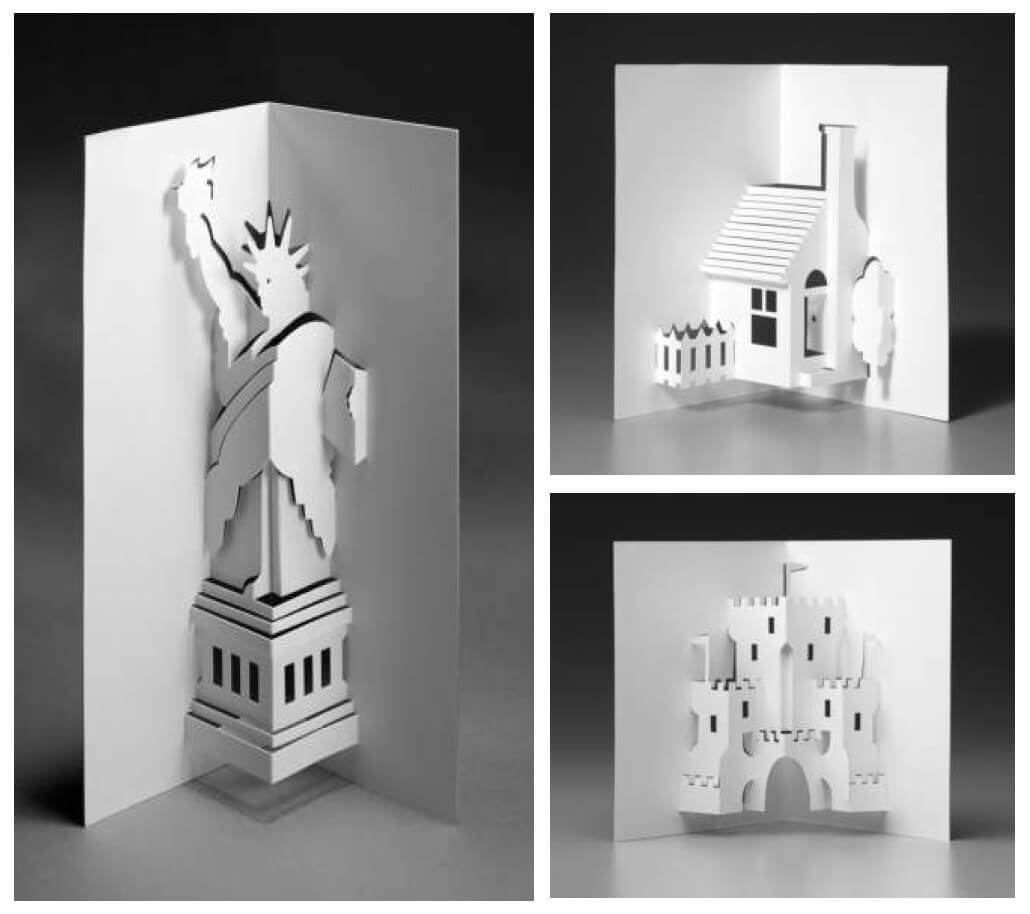Origamic Architecture: Unfolding the Beauty of Paper and Design

Origamic architecture is a form of paper art that involves cutting and folding paper to create three-dimensional structures, often inspired by architectural designs. The name “origamic architecture” comes from the combination of “origami” (the Japanese art of paper folding) and “architecture,” reflecting the fusion of these two disciplines.
Origamic architecture was first developed in Japan in the 1980s by Masahiro Chatani, a graphic designer and artist who was inspired by the traditional Japanese art of kirigami (paper cutting). Chatani began experimenting with paper cutting and folding techniques to create intricate three-dimensional structures, often inspired by famous buildings and landmarks.
Origamic architecture quickly gained popularity in Japan and around the world, with many artists and designers creating their own unique designs and styles. Today, origamic architecture is a popular hobby and artistic practice, with artists and enthusiasts creating everything from pop-up cards to complex sculptures and installations.
One of the key features of origamic architecture is its use of paper as a medium. Paper is an affordable and accessible material, making it easy for artists and enthusiasts to experiment and create their own designs. At the same time, paper can be delicate and fragile, requiring precision and care in cutting and folding.
Another key feature of origamic architecture is its focus on detail and precision. To create a three-dimensional structure from a flat piece of paper requires careful planning and execution, with each cut and fold needing to be precise and accurate. This attention to detail can create stunningly intricate and complex designs, with some artists using hundreds or even thousands of cuts and folds to create a single piece.
Origamic architecture also offers a unique way to explore and appreciate architecture and design. By recreating famous buildings and landmarks in paper form, artists and enthusiasts can gain a deeper understanding of the structure and design of these iconic buildings. They can also experiment with different styles and approaches, creating their own unique interpretations and variations on classic designs.
In terms of technique, origamic architecture often involves a combination of cutting and folding to create the desired shape and form. Some artists use computer software to design their pieces, while others prefer to work by hand, sketching out their designs and experimenting with different cutting and folding techniques.
Origamic architecture can be used to create a wide variety of structures, from simple pop-up cards to complex sculptures and installations. Some artists focus on recreating famous buildings and landmarks, while others create abstract and imaginative designs that push the boundaries of what is possible with paper.
Despite its popularity, origamic architecture remains a niche art form that is primarily practiced by enthusiasts and hobbyists. However, there have been some notable examples of origamic architecture being used in commercial contexts, such as advertising and product design. For example, in the 1990s, the Japanese automobile manufacturer Honda used origamic architecture in its advertising campaigns, creating intricate pop-up cards featuring its cars and motorcycles.
In recent years, there has been a growing interest in origamic architecture outside of Japan, with artists and enthusiasts around the world experimenting with this unique form of paper art. With its focus on detail and precision, and its ability to create stunningly intricate and complex designs, origamic architecture offers a unique and engaging way to explore the intersection of art, design, and architecture.





 Christmas
Christmas Father’s Day
Father’s Day Valentine’s Day
Valentine’s Day Easter
Easter Thanksgiving
Thanksgiving Halloween
Halloween
 Birthday
Birthday Wedding
Wedding Anniversary
Anniversary Graduation
Graduation Baby Shower
Baby Shower House Warming
House Warming
 For Him
For Him For Her
For Her For Kids
For Kids
 Floral
Floral Animals
Animals Trees
Trees Architecture
Architecture Vehicle
Vehicle LGBTQ+
LGBTQ+ Just Because
Just Because
 Pop-up Box
Pop-up Box Pop-up Stand
Pop-up Stand